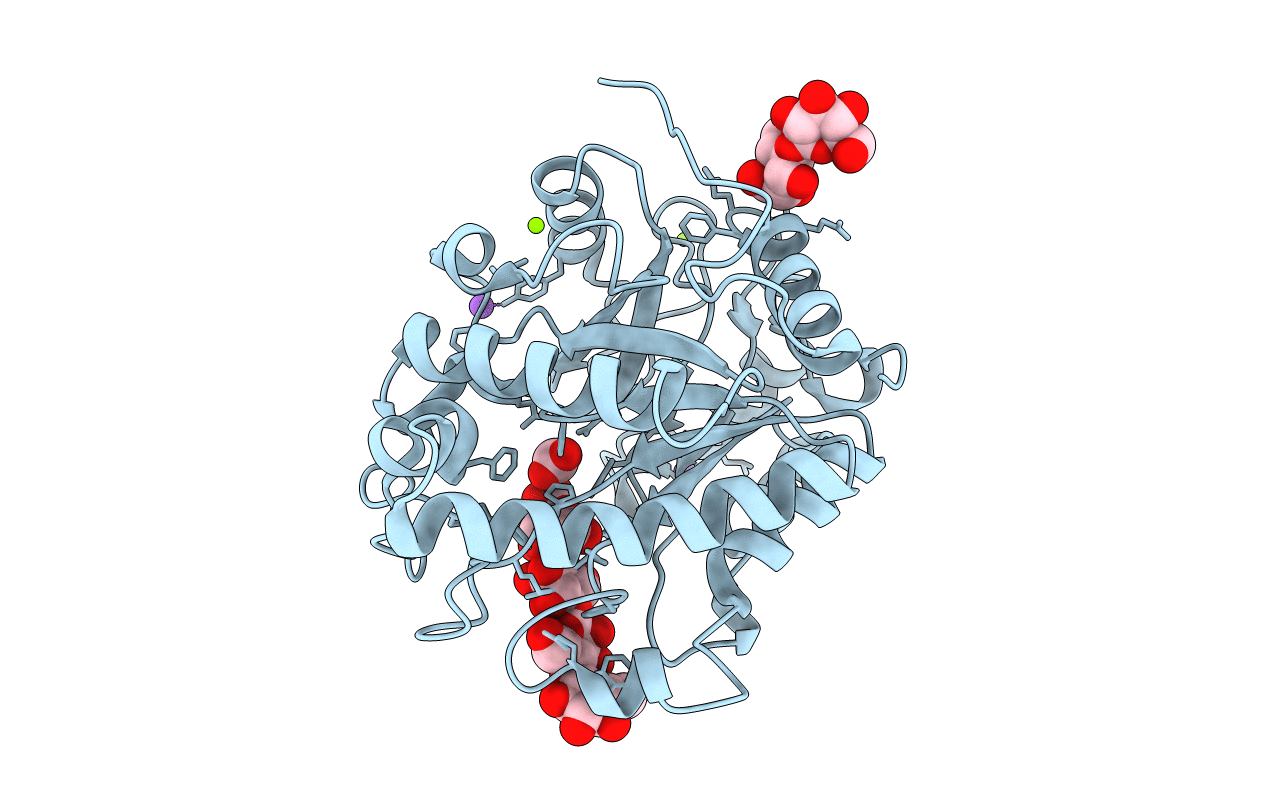
Deposition Date
2013-06-20
Release Date
2014-03-05
Last Version Date
2024-04-03
Entry Detail
PDB ID:
3WDR
Keywords:
Title:
Crystal structure of beta-mannanase from a symbiotic protist of the termite Reticulitermes speratus complexed with gluco-manno-oligosaccharide
Biological Source:
Source Organism:
Symbiotic protist of Reticulitermes speratus (Taxon ID: 356864)
Host Organism:
Method Details:
Experimental Method:
Resolution:
1.40 Å
R-Value Free:
0.15
R-Value Work:
0.13
R-Value Observed:
0.13
Space Group:
P 1 21 1


